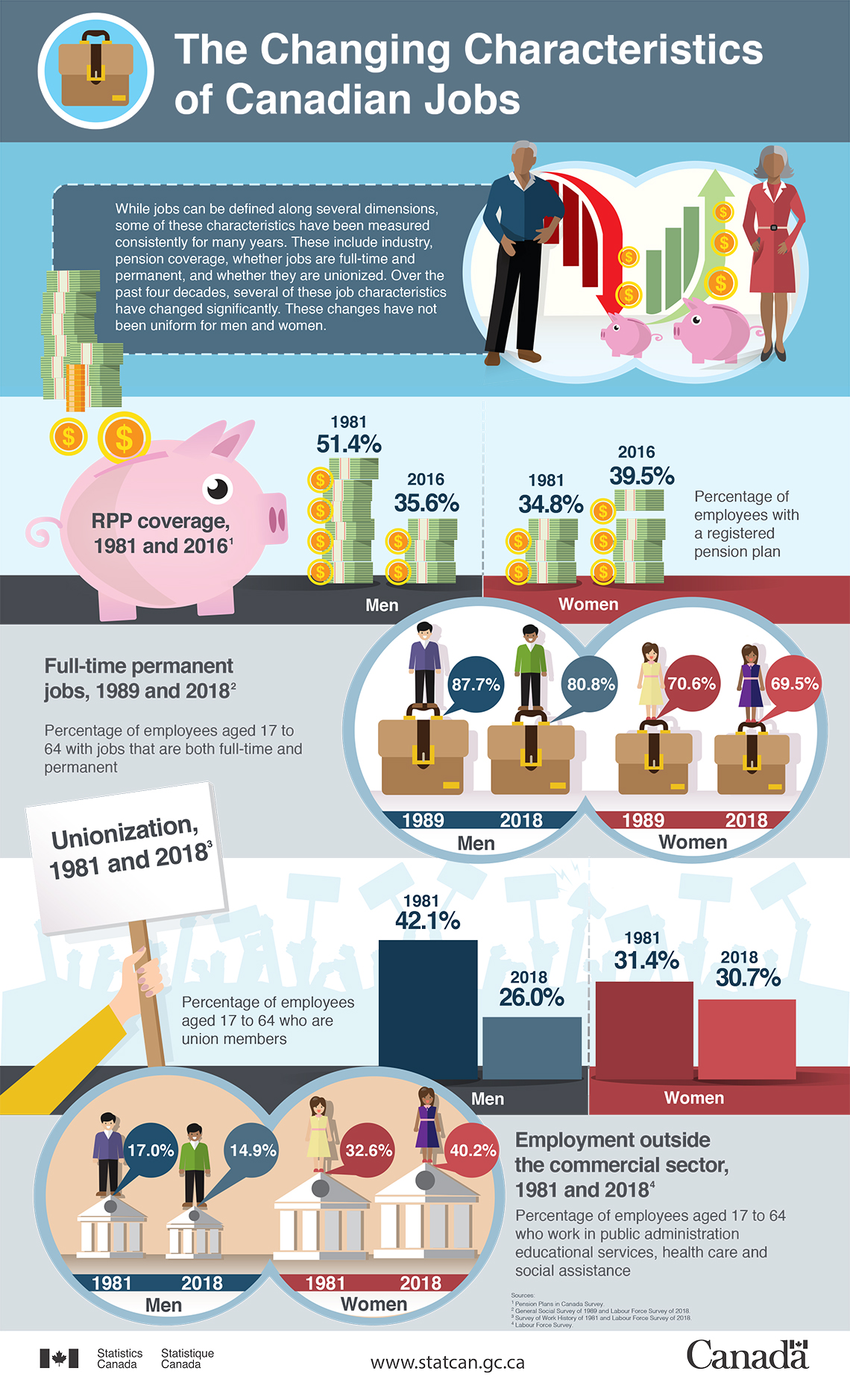The Changing Characteristics of Canadian Jobs
Archived Content
Information identified as archived is provided for reference, research or recordkeeping purposes. It is not subject to the Government of Canada Web Standards and has not been altered or updated since it was archived. Please "contact us" to request a format other than those available.

The Changing Characteristics of Canadian Jobs
The Changing Characteristics of Canadian Jobs
While jobs can be defined along several dimensions, some of these characteristics have been measured consistently for many years. These include industry, pension coverage, whether jobs are full-time and permanent, and whether they are unionized. Over the past four decades, several of these job characteristics have changed significantly. These changes have not been uniform for men and women.
RPP coverage, 1981 and 2016Footnote 1
| 1981 | 2016 | |
|---|---|---|
| Men | 51.4% | 35.6% |
| Women | 34.8% | 39.5% |
Full-time permanent jobs, 1989 and 2018Footnote 2
| 1989 | 2018 | |
|---|---|---|
| Men | 87.7% | 80.8% |
| Women | 70.6% | 69.5% |
Unionization, 1981 and 2018Footnote 3
| 1981 | 2018 | |
|---|---|---|
| Men | 42.1% | 26.0% |
| Women | 31.4% | 30.7% |
Employment outside the commercial sector, 1981 and 2018Footnote 4
| 1981 | 2018 | |
|---|---|---|
| Men | 17.0% | 14.9% |
| Women | 32.6% | 40.2% |
- Date modified:
